Text

PSA FOR THOSE IN DC AREA - PLEASE STOP FEEDING BIRDS (JUNE 2021)
An unknown transmittable illness is wiping out many native birds. Bird feeders, particularly uncleaned ones, are a major transmitter of disease. Please take them down for the meantime! Your birds will survive naturally without it - the impact of your ‘help’ could be far worse!
36K notes
·
View notes
Text
Yes, your fireworks are harming wildlife

Trigger warning for graphic descriptions of injured and dead wildlife.
When a fireworks display occurs near a wild bird roost, the birds simultaneously explode into the night skies in utter panic, which can lead to huge numbers of deaths, usually because these birds either smash their skulls or break their necks as the result of flying into trees, fences, billboards, houses and other solid objects that they cannot see in the gloom and ensuing chaos.
Many of the startled birds who take flight fly at much higher altitudes and for much longer durations than they’re used to to escape the noise, which is energetically costly and physiologically stressful.
Small birds and bats can be knocked from the air and killed by the sonic shock. In 2010, 40 dead sparrows were discovered dead under a roost in a nature reserve after a local fireworks display. The manager of the reserve witnessed a tawny owl fluttering and convulsing on the ground after a particularly loud explosion. It died shortly after.
In Arkansas in 2010, some 5,000 red-winged blackbirds, European starlings, common grackles and brown-headed cowbirds suffered blunt-force trauma after colliding with cars, trees and buildings, an ornithologist from the Arkansas Game and Fish Commission would tell National Geographic.
In 2008, federal officials showed that seabirds in the northern California town of Gualala abandoned their nests after a fireworks show, leaving their eggs vulnerable to predators.
Each year in Austin, Texas, the Congress Bridge bats can be seen fleeing the fireworks display en masse on weather radar, and emergences from their roost diminish noticeably in the days following the Fourth.
In 2018, the Galapagos banned the sale and use of pyrotechnics. According to the BBC, conservationists said that fireworks caused elevated heart rates, trembling and anxiety in many animals.
The threat to wildlife doesn’t stop at startling lights and sounds; fireworks also have the potential of starting wildfires, directly affecting wildlife and destroying essential habitat. Litter from firecrackers, bottle rockets and other explosives can be choking hazards for wildlife and may be toxic if ingested.
So what do you do if you want to watch fireworks responsibly? Experts say municipalities are more likely to be aware of these dangers than private consumers. Their best advice is to stick to the shows put on by professionals and local governments, which tend to follow guidelines put forth by the U.S. Fish and Wildlife Service, among others, about animal safety.
The National Audubon Society offers similar guidelines: “Commercial fireworks are concentrated in one location, rather than in several locations at once, which is what often happens in neighborhoods. This allows birds to take off and land again in a ‘safer’ location rather than continuing to flee noises coming at them from all directions.”
(Sources: x x x x x)
9K notes
·
View notes
Photo
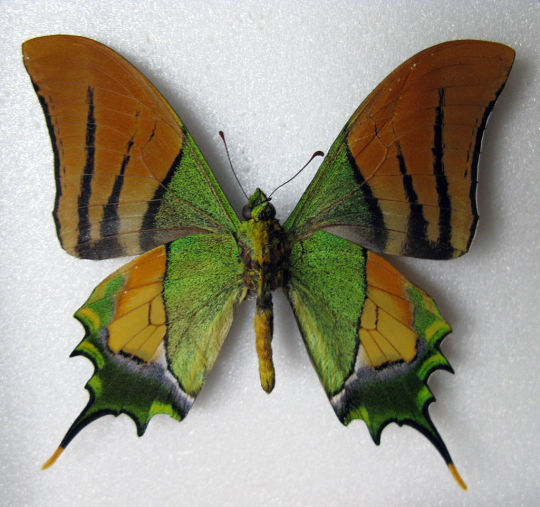
Golden Kaiser-i-Hind
Today’s lovely lepidopteran is the Golden Kaiser-i-Hind, otherwise known as Teinopalpus imperialis verso. This green and gold beauty is a rare species of swallowtail butterfly found from Nepal and northern India to eastern Vietnam. Its conservation status is precipitously listed as “near threatened”, teetering on the border of safe and endangered. The morphology of the Golden Kaiser-i-Hind is extremely unique, making it difficult to mix up this delightful creature with another butterfly. Its defining feature is the green iridescence on its wings, which is a result of a three-dimensional photonic structure of the scales and has been the focus of much research.
Image Source: User Anaxibia on Wikipedia, Own Work
461 notes
·
View notes
Text
hi, I am just wondering if anyone would be interested in being an admin for this tumblr! I’m very busy with school right now so I haven’t been updating it and I would love some help! Please share this if you can and reach out if you are interested.
27 notes
·
View notes
Photo

The Primrose Moth
Today’s lovely lepidopteran is the primrose moth, otherwise known as Schinia florida. It is in the Noctuidae family and it gets its name from the evening primrose, a flower on which the larvae feed. There is one generation of this sweet creature per year.
Image Source: 14 August 2005. Jacy Lucier. Wheatley, Ontario, Canada.
534 notes
·
View notes
Photo
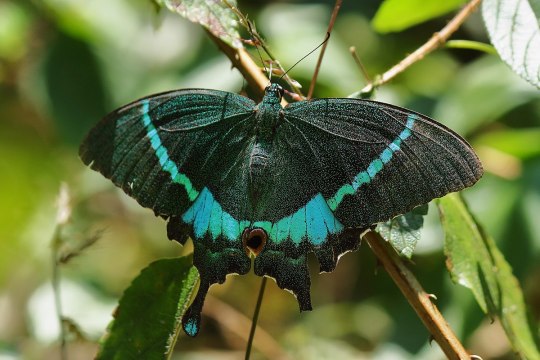
Common Banded Peacock Butterfly
Today I want to talk about the common banded peacock butterfly, otherwise known as Papilio crino. This dazzling creature is a type of swallowtail and a member of the Papilionidae family. It is most commonly found in parts of the Indian subcontinent, including India, Nepal, Bhutan, and Sri Lanka. The common banded peacock is most easily identified by a bright turquoise marking that winds down the forewing and across the hindwing. It was first described by Johan Cristian Fabricius in 1792.
Image Source: Sathya K. Selvam. 15 February 2020. Wikimedia Commons.
206 notes
·
View notes
Text
a resource for housing and transportation tonight for those in the city. please get out before 6 PM.
42K notes
·
View notes
Photo

The Glasswinged Butterfly
Today’s lovely lepidopteran is a member of the brush-footed family called Greta oto, or the glasswinged butterfly. It is named after its uniquely transparent wings, which give it the advantage of camouflage without any extensive coloration. This butterfly fits in wherever it goes! In Spanish speaking countries, this butterfly is sometimes known as espejitos, or “little mirrors”. Its glass-like wings may evoke an air of fragility, but this dainty-looking creature is actually capable of carrying up to forty times its own weight and it has been known to make long migrations. The glasswinged butterfly is typically found in Central and South America, and thrives in tropical rainforest conditions.
Image Source: David Tiller. August 30th, 2008. Wikimedia Commons.
559 notes
·
View notes
Text
trump finalized auctioning off land in the arctic national wildlife refuge to oil and gas companies which would not only damage the ecosystem, negatively impact wildlife, and pollute one of the last environmental regions untouched by human greed but it would also disproportionately affect the Gwich’in who rely on the migration of caribou in that region.
reblog or maybe consider donating to the natural resources defense council on this?
32K notes
·
View notes
Text
Hello Aquarium Tumblr Family! After being closed for over 9 months, we continue to face a massive shortfall. If you’re able, a year-end gift will help us care for our animals and continue our mission of ocean conservation. Thank you for being otter this world!

5K notes
·
View notes
Photo
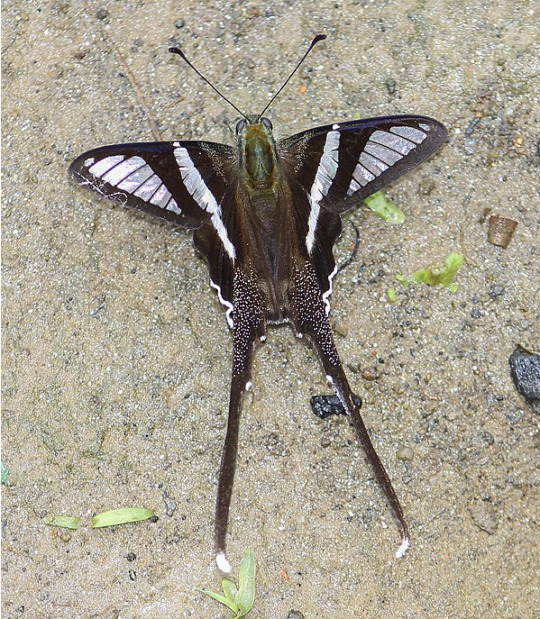
The White Dragontail Butterfly
Today I want to talk about the white dragontail butterfly, or Lamproptera curius. It is a type of swallowtail, which are large, colorful butterflies in the Papilionidae family. The white dragontail butterfly’s plain black and white coloring make it an exception to other swallowtails, but it is nonetheless quite striking to look at. Although it looks white in this picture, its outer wings are actually quite glass-like, and the long tails on its hindwing transform this beautiful butterfly into a mythical dragon-like creature when it flies.
Image Source: Subhendukhan. Wikimedia Commons. 26 September 2018.
106 notes
·
View notes
Photo
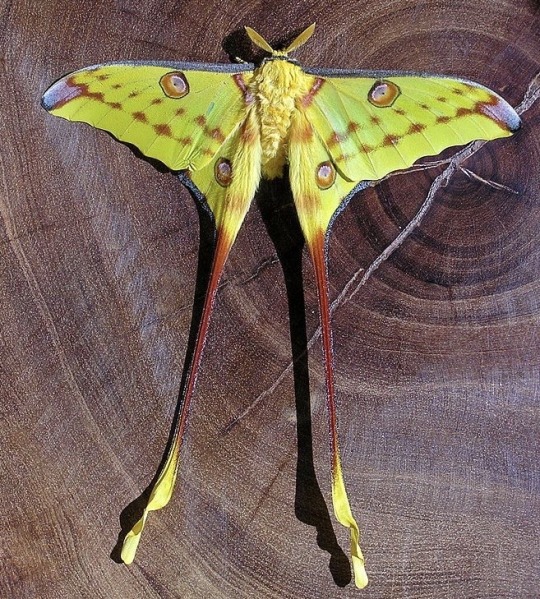
The Comet Moth
Today’s lovely lepidopteran is the comet moth. Sometimes called the Madagascan moon moth, or Argema mittrei, this handsome fellow is one of the largest giant silk moths. The males have a wingspan of 7.9 inches and a tailspan that is arguably even more impressive at a whopping 5.9 inches. The females are larger than the males, but they have shorter, thicker tails (although no less beautiful!). As with other giant silk moths, the adults emerge into the world without a mouth and cannot feed, so they only live for a short period of time. Adult comet moths only live for 4 to 5 days, which might make them tricky to spot in the wild. This moth is indigenous to the rain forests of Madagascar and is endangered in the wild, but it has been bred in captivity.
This moth was a request from River. Hi, River!
Image Source: Bernard Dupont. 8 October 2004. Feon'ny Ala Hotel, Perinet Reserve, Madagascar.
210 notes
·
View notes
Photo
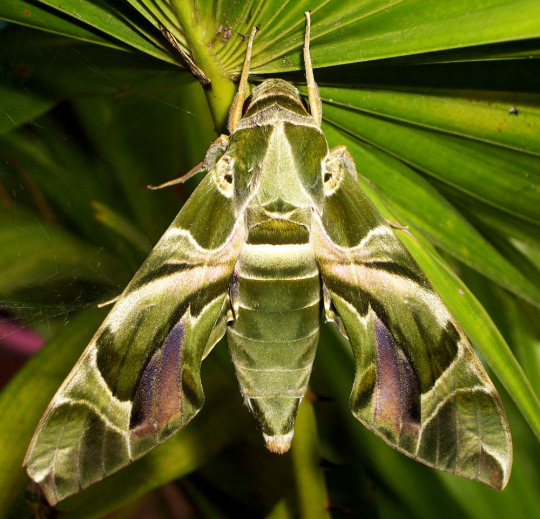
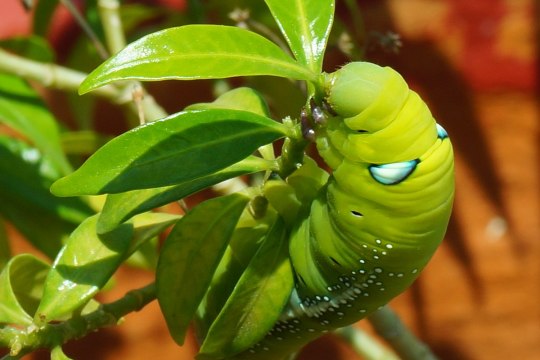
The Oleander Hawk Moth
Today (after a long hiatus!) I want to talk about Daphnis nerii, otherwise known as the Oleander hawk moth. This moth is part of the Sphingidae family, although they are more colloquially known as hawk moths or hornworms. This charming chartreuse creature is usually found in Africa and Asia, as well as certain Hawaiian islands, where it was used to control an invasive species and pollinate endangered plants.
The caterpillars mainly feed on the toxic leaves of the Oleander plant, for which this moth is named, but the imago (or adult) form feeds on the nectar of a wide range of plants. The Oleander hawk moth could be said to have somewhat of a refined palate, as it prefers to feed on fragrant blooms like honeysuckle and jasmine. Like a great many other creatures that roam the Earth, Daphnis nerii was described by Carl Linnaeus in his 1758 edition of Systema Naturae.
First Image: Shantanu Kuveskar. Mangaon, Maharashtra. 9 August 2012.
Second Image: SKsiddhartthan. 28 March 2017.
69 notes
·
View notes
Photo
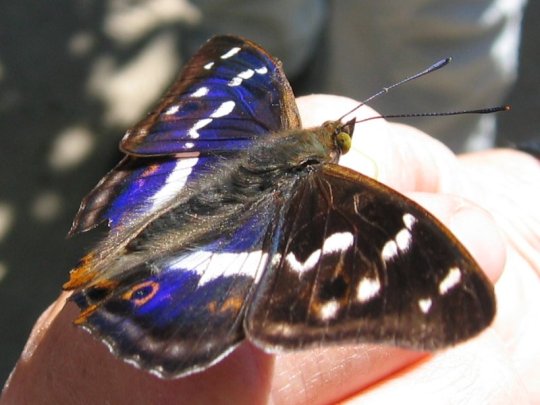
Purple Emperor Butterfly
Today’s butterfly is the purple emperor butterfly, otherwise known as Apatura iris. It is Palearctic, meaning it is found in one of eight biogeographic regions which the world is divided up into for zoological classification. This particular region stretches across Asia to Northeast Africa, and is the largest of all eight. Although the adults actually have dark brown wings, the males have an iridescent sheen on them that makes this butterfly appear to be purple. Female purple emperor butterflies do not have this quality. One fun fact about this butterfly is that it is a little bit a of a picky eater. While most butterflies feast on flowers, the purple emperor does not. Instead, it prefers to dine on honeydew produced by aphids, oak tree sap, dung, and animal carcasses. Delicious!
This butterfly was a request from Caroline. Hi, Caroline!
Image Source: Kristian Peters – Fabelfroh - Own work, CC BY-SA 3.0, https://commons.wikimedia.org/w/index.php?curid=1324134
81 notes
·
View notes
Photo
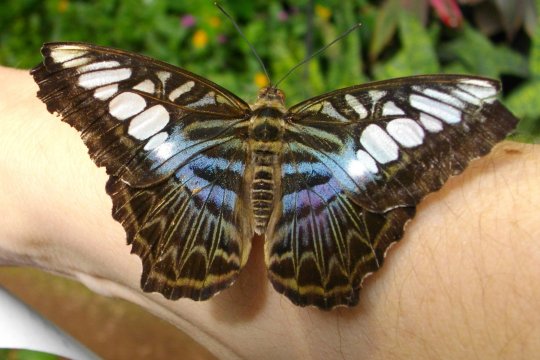
Blue Clipper
Today I want to talk about the beautiful blue clipper butterfly, otherwise known as Parthenos sylvia. This butterfly may be one of 6,000 butterflies in the Nymphalidae family, but it certainly stands out from the crowd with its bold coloring and striking pattern. There are many subspecies of the blue clipper but each of them have large, broad wings with similar patterns, although the colors differ. In addition to its striking appearance, this butterfly is known for its fast-paced flight pattern. It can be found in South and Southeast Asia.
Image Source: Robert Nunnally. Tucson Botanical Garden, Butterfly house. 1 February 2009.
102 notes
·
View notes
Photo

Cramer’s Eighty-Eight
Today’s butterfly is an especially whacky one called Cramer’s eighty-eight, otherwise known as Dieathria clymena. From above, this butterfly’s black wings look relatively unassuming, but when Cramer’s eighty-eight folds its wings up to reveal the underside, it’s a whole different story. The ventral part, or underside, of the wing has stunning black and white stripes with a red splash, but the most striking thing about this butterfly are the strange markings in the center of their wings, which often looks like a “98” or an “89”. This butterfly is part of the Nymphalidae family, and it can be found from Mexico to Peru, as well as Brazil.
Image Source: 6 April 2012. Paolo Costa Baldi. The Andes Mountains, Venezuela.
111 notes
·
View notes
Photo

Garden Tiger Moth
Today, I want to talk about the garden tiger moth. It is also sometimes called the great tiger moth, and its latin name is Arctia caja. This marvelous moth is known for its stunning wings, which can vary in design. The front wings are said to be brown with a white pattern, but sometimes this white pattern is not present. The back wings are a brilliant shade of orange and are typically covered with black dots. Additionally, there are many variations of this moth. Some of these variations occurred organically at the hand of mother nature, but some variations were made artificially, perhaps by a mother of another nature…
The garden tiger moth’s fabulous wings are actually a big red flag to predators: this idyllic insect is actually very poisonous! Although the properties of its poison are not yet fully known, it seems to affect the acetylcholine receptor in the brain. If you were to eat one, it might have a profound effect on your nervous system and your ability to control your muscles. For those of you who think this pretty moth might be a delicious little snack--think twice!
This moth was another request from Shannon. Hi again, Shannon!
Image Source: Wikimedia Commons. Temple of Mara, Wester Ross, Scotland. 8 July 2012.
97 notes
·
View notes